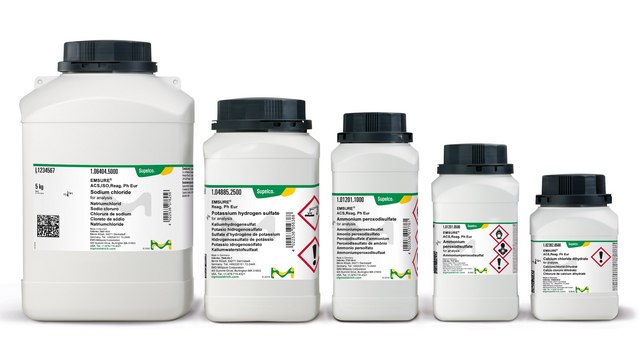GF52254233
Iron
rod, 100mm, diameter 100mm, as drawn, armcO« soft ingot 99.8%
Synonym(s):
Iron, FE007995
Sign Into View Organizational & Contract Pricing
All Photos(2)
About This Item
Linear Formula:
Fe
CAS Number:
Molecular Weight:
55.85
MDL number:
UNSPSC Code:
12141721
PubChem Substance ID:
NACRES:
NA.23
Recommended Products
Assay
99.8%
form
rod
manufacturer/tradename
Goodfellow 522-542-33
resistivity
9.71 μΩ-cm
L × diam.
100 mm × 100 mm
bp
2750 °C (lit.)
mp
1535 °C (lit.)
density
7.86 g/mL at 25 °C (lit.)
SMILES string
[Fe]
InChI
1S/Fe
InChI key
XEEYBQQBJWHFJM-UHFFFAOYSA-N
General description
For updated SDS information please visit www.goodfellow.com.
Legal Information
Product of Goodfellow
Regulatory Information
新产品
Choose from one of the most recent versions:
Certificates of Analysis (COA)
Lot/Batch Number
Sorry, we don't have COAs for this product available online at this time.
If you need assistance, please contact Customer Support.
Already Own This Product?
Find documentation for the products that you have recently purchased in the Document Library.
Hypoferremia of infection: a double-edged sword?
Kristen L Lokken et al.
Nature medicine, 20(4), 335-337 (2014-04-09)
50 years ago in the Journal of Pediatrics: Iron metabolism in premature infants: II. Prevention of iron deficiency.
Pamela J Kling
The Journal of pediatrics, 164(4), 768-768 (2014-03-22)
Thomas A Russo et al.
Infection and immunity, 82(6), 2356-2367 (2014-03-26)
Hypervirulent (hypermucoviscous) Klebsiella pneumoniae (hvKP) strains are an emerging variant of "classical" K. pneumoniae (cKP) that cause organ and life-threatening infection in healthy individuals. An understanding of hvKP-specific virulence mechanisms that enabled evolution from cKP is limited. Observations by our
Laura M van Staalduinen et al.
Proceedings of the National Academy of Sciences of the United States of America, 111(14), 5171-5176 (2014-04-08)
The enzymes PhnY and PhnZ comprise an oxidative catabolic pathway that enables marine bacteria to use 2-aminoethylphosphonic acid as a source of inorganic phosphate. PhnZ is notable for catalyzing the oxidative cleavage of a carbon-phosphorus bond using Fe(II) and dioxygen
Don-Kyu Kim et al.
Nature medicine, 20(4), 419-424 (2014-03-25)
In response to microbial infection, expression of the defensin-like peptide hepcidin (encoded by Hamp) is induced in hepatocytes to decrease iron release from macrophages. To elucidate the mechanism by which Salmonella enterica var. Typhimurium (S. typhimurium), an intramacrophage bacterium, alters
Our team of scientists has experience in all areas of research including Life Science, Material Science, Chemical Synthesis, Chromatography, Analytical and many others.
Contact Technical Service

